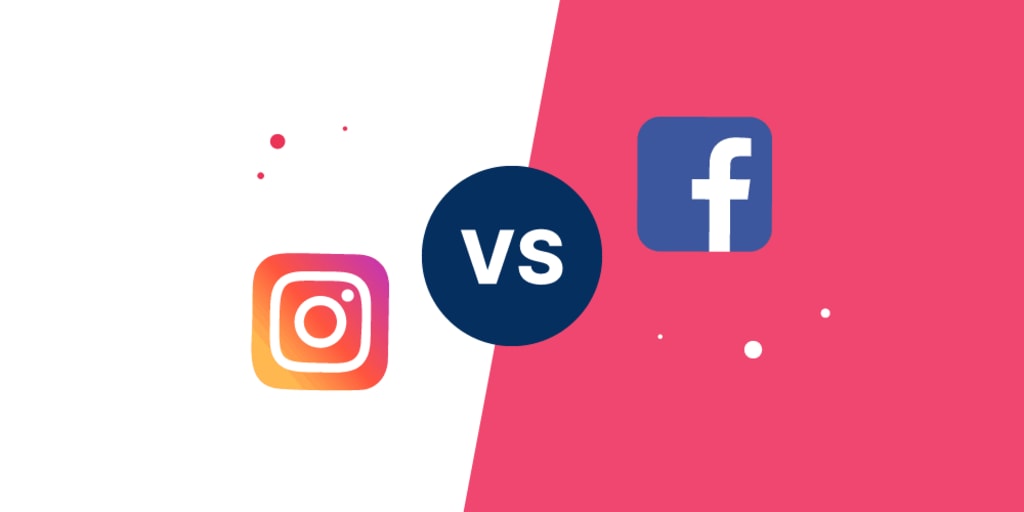Facebook vs. Instagram
The Battle of Social Media Titans

Social media platforms have become an integral part of our lives, connecting people from all corners of the world and transforming the way we communicate, share information, and express ourselves. Two giants in the realm of social media, Facebook and Instagram, have captured the attention and loyalty of billions of users. While both platforms are under the same parent company, they offer unique features and experiences that cater to different user preferences. This article will delve into a comprehensive comparison of Facebook and Instagram, exploring their origins, features, target audiences, impact on society, and potential future directions.
1. Origins and Evolution (200 words):
Facebook, founded by Mark Zuckerberg in 2004, began as a social networking site exclusively for Harvard University students before expanding its reach to other universities and eventually opening up to the general public. Instagram, on the other hand, was launched by Kevin Systrom and Mike Krieger in 2010 as a mobile photo-sharing platform. Facebook recognized Instagram's potential and acquired it in 2012, integrating the two platforms to leverage their respective strengths.
2. Features and User Experience (400 words):
Facebook offers a diverse range of features, allowing users to connect with friends and family, share updates, photos, and videos, join groups, and discover news and events. The platform's News Feed is its centerpiece, presenting a curated stream of content based on user preferences and algorithms. Facebook also supports businesses and creators through Pages and Groups, enabling targeted marketing and community building.
Instagram, known for its visually captivating content, focuses on photo and video sharing. It offers a wide array of filters, editing tools, and storytelling features like Stories and IGTV. Instagram's Explore page helps users discover new content and profiles tailored to their interests. With its emphasis on visual aesthetics, Instagram has become a hub for influencers, artists, photographers, and businesses to showcase their work and engage with followers.
3. Target Audience and Demographics (300 words):
Facebook has evolved to cater to a wide demographic, encompassing users of various age groups and interests. It appeals to older adults seeking to connect with friends, stay updated with news, and engage in community activities. Instagram, on the other hand, skews toward a younger audience, particularly millennials and Gen Z, who gravitate towards visually engaging content and value self-expression. The platform's emphasis on visual storytelling and influencers has made it popular among individuals seeking creative inspiration and unique experiences.
4. Impact on Society (400 words):
Facebook and Instagram have undeniably reshaped society, transforming the way we communicate, share information, and interact with each other. They have played a significant role in political movements, social activism, and citizen journalism, amplifying voices and facilitating global conversations. However, they have also faced criticism for the spread of misinformation, invasion of privacy, and negative effects on mental health.
Facebook has faced scrutiny for its handling of user data and its role in the proliferation of fake news during political campaigns. The platform has taken steps to address these concerns, implementing fact-checking initiatives and tightening security measures. Instagram, while not immune to these issues, has focused on creating a positive and supportive community by implementing tools to combat cyberbullying and promoting mental health awareness.
5. Future Directions and Challenges (350 words):
As social media continues to evolve, both Facebook and Instagram face new challenges and opportunities. Facebook is investing heavily in virtual reality (VR) technology through its subsidiary, Oculus, aiming to create immersive social experiences. Instagram is expanding its e-commerce capabilities, allowing users to shop directly from the app and facilitating seamless transactions.
Both platforms are exploring the integration of augmented reality (AR) and artificial intelligence (AI) to enhance user experiences and drive innovation. They are also addressing concerns around
user privacy and content moderation, striving to strike a balance between user safety and freedom of expression.
Conclusion (100 words):
Facebook and Instagram, while part of the same family, offer distinct experiences and cater to diverse user demographics. Facebook provides a broad range of features for connecting with friends, family, and communities, while Instagram focuses on visually-driven content and creative expression. As these platforms continue to evolve and adapt to societal needs, their impact on our lives will only deepen. Understanding their similarities, differences, and the challenges they face will allow users to make informed choices and navigate the ever-evolving landscape of social media.





Comments
There are no comments for this story
Be the first to respond and start the conversation.